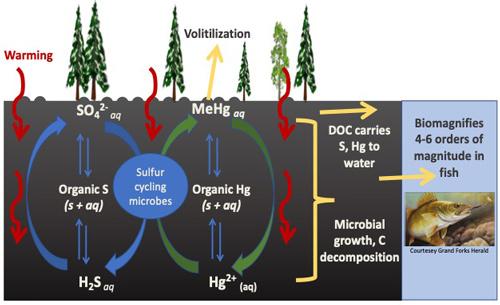
Image credit: Jessica Gutknecht
The goal of this project is to understand how changing temperature, precipitation, and subsequent water table conditions alter the magnitude and direction of changes in sulfur and mercury release from peatlands to water to better predict future total mercury and methyl mercury levels in the Lake Superior watershed.
Why do this
Mercury in the Lake Superior Basin is a serious problem that affects the health and economy of the people of Minnesota. Headwater wetlands and peatlands are significant sources of mercury to surface waters, where environmental changes will possibly increase the mobility of mercury directly or through increased cycling rates of carbon and sulfur.
Funding
Minnesota Sea Grant provided research support through our 2020-2022 biennial competitive Request for Proposal (RFP) process.
Lead scientist(s)
Jessica Gutknecht
Assistant Professor
Department of Soil, Water, Climate
University of Minnesota Twin Cities
612-626-8435
jgut@umn.edu
Scholarly Articles
Pierce, C.E., Furman, O.S., Nicholas, S.L., Coleman Wasik, J., Gionfriddo, C.M., Wymore, A.M., Sebestyen, S.D., Kolka, R.K., Mitchell, C.P.J., Griffiths, N.A., Elias, D.A., Nater, E.A. and Toner, B.M. (2022). Role of ester sulfate and organic disulfide in mercury methylation in peatland soils. Environmental Science & Technology 2022 56 (2), 1433-1444
https://pubs.acs.org/doi/10.1021/acs.est.1c04662
Partners
- Oak Ridge National Laboratory, Federal Government
- U.S. Forest Service, Northern Research Station, Federal Government